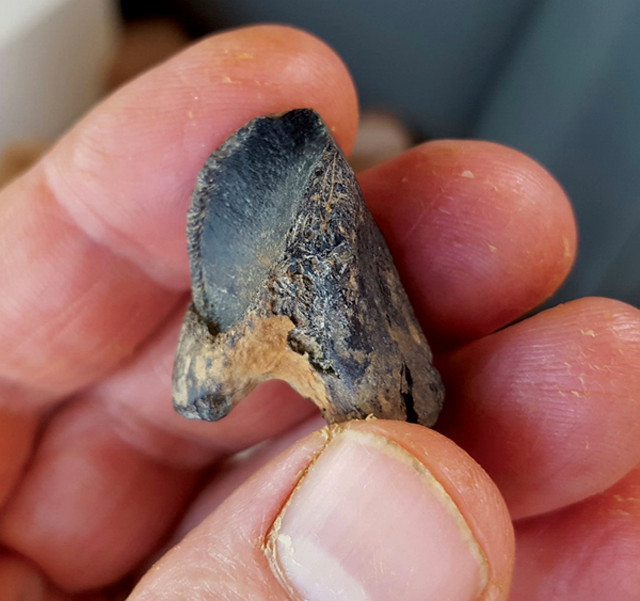
by David Moscato Monday, July 17, 2017

A ceratopsid tooth found recently in Mississippi. Credit: George Phillips, MDWFP Museum of Natural Science.
Fossils of horned dinosaurs called ceratopsids, the group that includes Triceratops, are usually found in either western North America or Asia. But the discovery of a single ceratopsid tooth in Mississippi, reported in a new study in PeerJ, hints that this group spread into new territory at the tail end of the Mesozoic Era — just prior to going extinct. Migrating from Montana — or elsewhere where ceratopsid fossils are found in abundance — to Mississippi is straightforward today, but during the Late Cretaceous, North America was split by the Western Interior Seaway into two landmasses, Laramidia to the west and Appalachia to the east. This division created distinct dinosaur communities on either side of the continent, with ceratopsids notably cut off from the east.
The new tooth was discovered near New Albany, Miss., by study co-author George Phillips, a paleontologist at the Mississippi Museum of Natural Science, in marine sediments dating to between 68 million and 66 million years ago. Nestled among fossils of ammonites and crustaceans, the tooth appears to have washed out to sea from the nearby Appalachian shoreline, Phillips and lead author Andy Farke of the Raymond M. Alf Museum of Paleontology in California suggested in the study. They wrote that, considering the geographic and sedimentological context of the fossil find, this is a more “parsimonious” explanation than the tooth having been transported across the seaway from an animal originating in Laramidia.
“Although we only have a single tooth, it is enough to show that animals closely related to Triceratops — or perhaps even Triceratops itself — made it from western North America into eastern North America at the close of the Cretaceous,” Farke says.
The tooth supports the hypothesis that, as the seaway retreated at the end of the Mesozoic, a southern land passage opened, allowing west to meet east after 30 million years of separation. If true, there should be more eastern ceratopsid fossils waiting to be found. “[Phillips] and his colleagues from Mississippi are keeping a sharp eye out for more fossils in their neck of the woods,” Farke says.
© 2008-2021. All rights reserved. Any copying, redistribution or retransmission of any of the contents of this service without the expressed written permission of the American Geosciences Institute is expressly prohibited. Click here for all copyright requests.